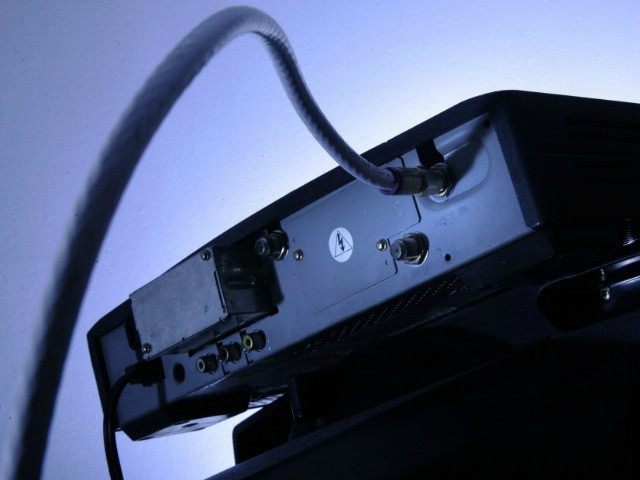The concept of protecting creators of tangible and intellectual property started with the ancient Greeks and was codified by the Venetians nearly six hundred years ago. The theory was simple — to use a widget or process devised by another, a royalty needed to be paid to the inventor.
Patents are essential to individual liberty and economic fairness in a society which values the rule of law. But like any other ideal devised by man and implemented by government, patents can be used as monetary clubs over the heads of competitors and consumers.
Such is the case with the Advanced Television Systems Committee (ATSC), an organization tasked by government to suggest voluntary digital TV standards. The DTV patent pool is in ATSC’s portfolio but exclusively controlled by MPEG LA, a Colorado-based for-profit licensing firm already on the receiving end of a number of complaints including unfair royalties, anti-trust behavior, and the potential quashing of innovation.
Patent pools are collectively licensed, complimentary patents grouped together to make a technology standard such as the ATSC digital broadcast standard. They are approved by the Department of Justice (DOJ) under the expectation that they will operate in a way that does not harm competition by bundling unnecessary or duplicative patents into the pool, or restricting access to the standard through inflated licensing fees. MPEG LA has done both in the case of ATSC; nearly a quarter of its patents have expired yet the license fee remains unchanged.
Sadly, a Federal Communications Commission (FCC) mandate ties the hand of the free market from allowing competing standards to offer consumers lower prices. Since the 2009 completion of the “digital transition,” the FCC requires every television sold in the U.S. to license the monopolistic ATSC standard from the privately held MPEG LA.
MPEG LA is charging television buyers $5.00 for the ATSC license along with an additional $2.00 because it claims the ATSC pool is reliant on another pool it controls called MPEG-2. This $7.00 total is tagged onto the cost of every television sold in the U.S. and many other products like digital cable boxes which require a digital tuner. These hidden costs are all paid unknowingly by the consumer at the register.
The ATSC TV tax was not the only factor making the digital transition costly for consumers. Many had to buy additional monthly cable or satellite services and/or converter boxes even to watch local news or replace analog TVs with new digital models. The cost also hit taxpayers when the federal government earmarked $1.8 billion to subsidize converter box purchases. Millions went to “final transition closeout costs” and the “Digital TV Public Safety Fund,” paradoxically created under the 2009 Deficit Reduction Act.
In 2009, several television manufacturers requested the FCC explore what they considered unfair patent burdens and royalty overcharges exceeding international norms that added $20 to $30 to the cost of new TVs, including the $7.00 paid to MPEG LA for the ATSC standard.
This largely unknown fee is a costly redundancy in the changing nature of TV usage. My son and his four college roommates each have a television. They have wifi, but no broadcast access. They use Chromecast for Internet activity through the TV, streaming shows and movies with Hulu, Amazon or Netflix through laptops onto the TV. They receive exactly none of the “benefits” they paid in patent royalties on their televisions. Millenials, who ride technology waves before they come ashore, won’t put up with that for long.
Between 2012 and 2013, pay TV providers experienced their first net loss of subscribers. Most were quitting pay TV, not moving to another service. Almost a million customers were lost by Comcast and Time Warner Cable.
Last year Nielson added a new rating demographic, “Zero TV” – consumers who don’t subscribe to broadcast television. This number more than doubled between 2007 and 2013 to five million, and even though 75% of these households had televisions, they were not interested in pay TV but stuck with paying royalties to MPEG LA for something they may never use.
Technology standards are necessary, and when patent pools operate fairly they benefit consumers by adding efficiency to the licensing process. Unfortunately, MPEG LA puts profits over its DOJ obligations while the FCC empowers it through mandating ATSC standards inclusion in equipment.
In recent years, Congress and the DOJ have expressed concern about anti-trust, monopoly behavior. “Patent” comes from the Latin litterae patents, “to lay open for public inspection” — perhaps oversight agencies could foster more transparency in a standard involuntarily subsidized by nearly every American household.
Kerri Toloczko is a senior fellow at Frontiers of Freedom, a public policy institute dedicated to promoting individual freedom, limited government and free enterprise.

COMMENTS
Please let us know if you're having issues with commenting.